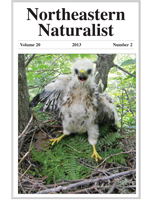Once abundant in Kentucky, Ursus americanus (American Black Bear) were extirpated from the state by the late 19th century because of overharvest and habitat alteration. Regenerating deciduous forests, increased human tolerance, and source population growth and expansion in neighboring states have facilitated Black Bear recolonization in parts of southeastern Kentucky since the 1980s. As of 2012, <500 Black Bears were estimated to occur in Kentucky, with most individuals found in two successfully reproducing, geographically separate, and genetically distinct core populations in the southeastern part of the state. Our research suggests that population growth and expansion of Black Bears within Kentucky is occurring and abundant suitable habitat exists to support further increases in range and numbers. Potential impediments to further population growth and recolonization include roads, overexploitation primarily from illegal harvest, and habitat loss and fragmentation. The recolonization of Kentucky by the Black Bear represents an important case study of population growth and expansion of large mammals in the eastern US that has widespread ecological and economic implications.
How to translate text using browser tools
1 June 2013
History and Current Status of the Black Bear in Kentucky
David E. Unger,
John J. Cox,
Hannah B. Harris,
Jeffery L. Larkin,
Ben Augustine,
Steven Dobey,
Joseph M. Guthrie,
John T. Hast,
Rebekah Jensen,
Sean Murphy,
Jason Plaxico,
David S. Maehr
ACCESS THE FULL ARTICLE

Northeastern Naturalist
Vol. 20 • No. 2
June 2013
Vol. 20 • No. 2
June 2013




